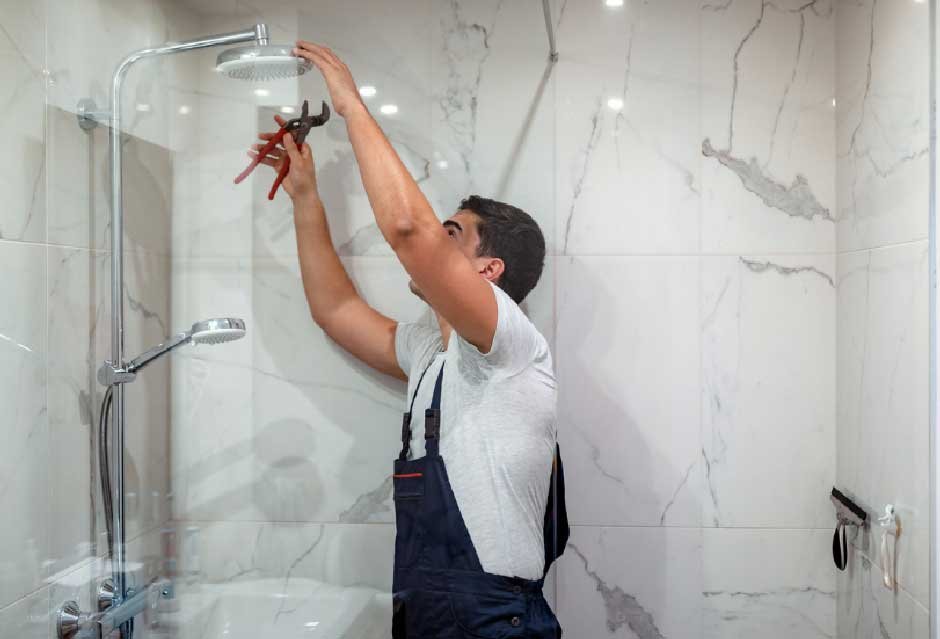Wet rooms have become a stylish and practical addition to many homes, offering a luxurious shower experience and saving valuable space. However, installing a wet room isn’t as simple as it seems—proper planning and execution are crucial to ensure everything works as it should. Let’s explore some of the most common wet room installation mistakes and how to avoid them. By steering clear of these pitfalls, you can achieve a stunning, functional wet room that will last for years to come, advises TrustArt Realty Specialists.
Mistake #1: Incorrect Waterproofing
One of the most crucial aspects of wet room installation is ensuring proper waterproofing. Without it, you’re setting yourself up for water leakage, dampness, and even mould problems. Unfortunately, some people overlook the importance of sealing every surface, including floors, walls, and corners, which can lead to costly repairs later on.
Tip: Invest in a professional waterproofing system that’s designed specifically for wet rooms. Make sure all joints and corners are sealed correctly, and don’t skimp on the quality of your waterproofing materials. This is an area where cutting corners will definitely come back to haunt you.
Mistake #2: Poor Drainage Design
Drainage is one of the most overlooked but vital aspects of a wet room. If the drainage system isn’t correctly designed, you’ll end up with pools of water gathering on the floor, which not only looks unsightly but can also cause damage over time. A common mistake is installing a drain that’s placed incorrectly or neglecting the floor’s slope.
Tip: The floor of your wet room should be subtly sloped towards the drain to ensure water flows properly. Be sure that the drain is located in the most efficient spot, and check that it’s capable of handling the volume of water from the shower. Consider hiring a professional to get this right. Be sure to check out these versatile wet room ideas for bathrooms.
Mistake #3: Using the Wrong Flooring Materials
Choosing the wrong flooring materials can lead to slipping hazards, deterioration, or even water damage in the long run. Materials like wood or carpet might seem tempting, but they’re not suitable for wet environments. Wet rooms require materials that are durable, slip-resistant, and waterproof.
Tip: Opt for non-slip tiles that are easy to clean and won’t absorb water. Porcelain or ceramic tiles are great choices, as they’re durable and resistant to moisture. Make sure to use grout that’s also waterproof to keep everything sealed and protected.
Mistake #4: Neglecting Ventilation
A wet room is a high-moisture area, and without proper ventilation, you’re inviting problems like mould and mildew. Ventilation is essential to ensure that the room dries out properly after each use. Many homeowners overlook this aspect, assuming that the natural airflow will be sufficient.
Tip: Install a powerful extractor fan to keep air circulating and moisture levels under control. If possible, add underfloor heating to help dry out the room more quickly. A well-ventilated wet room is crucial for maintaining a healthy environment and extending the lifespan of your fixtures and finishes.
Mistake #5: Skimping on Quality Materials
While it might be tempting to go for cheaper materials, cutting corners can lead to more problems down the road. Low-quality tiles, fixtures, and waterproofing materials can wear out quickly or become damaged by moisture. Opting for cheap options may save money initially, but it’ll cost you more in repairs or replacements in the future.
Tip: Invest in high-quality, durable materials from the start. This includes tiles, waterproofing membranes, and shower fixtures. The upfront cost might be higher, but the long-term benefits—such as fewer repairs and a better-looking space—are well worth it.
Tips for Designing a Safe Family Wet Room
Is safety the main priority with your bathroom renovation? Generally, it’s recommended that a wet room creates accessibility in a family environment. Whether you’re older and have mobility concerns or you have young children that you want to be safe showering by themselves, the wet room can be the best choice. But, if you’re still worried about safety, there are some additional things you can do with your new wet room. Let’s take a look at what they are.
Add a Shower Tray
Did you assume that a wet room doesn’t have a shower tray? While this can be common, it doesn’t mean that you can’t install one. There are some designs that have a low profile, which means that they can help with drainage and make the shower safer. Indeed, they can be anti-slip. This can ensure that you have peace of mind when your family are using the bathroom.
Have Grab Rails
It can help to have something to hold onto when you’re moving around in the shower. Not everybody is steady on their feet and when you introduce water into this equation, things can get dangerous. The best thing you can do is install grab rails. This means that you can hold onto them and feel safer when you’re getting in and out of the shower.
Install Underfloor Heating
People think that underfloor heating in the bathroom is all about comfort. Indeed, it can make sure that the space is cosy when you come out of the shower. But, it can also help with drying up a wet room and making sure that water can’t pool. This is when it becomes hazardous. So, even though underfloor heating can be an expense, it can help to make your wet room safer by drying up surfaces.
Conclusion
Building a wet room requires careful planning and attention to detail. By avoiding the common mistakes we’ve covered here, you can create a space that’s both beautiful and functional. Remember, investing in quality materials, hiring the right professionals, and planning every detail will pay off in the long run. A well-installed wet room can add value to your home and provide a luxurious, practical space for years to come.



